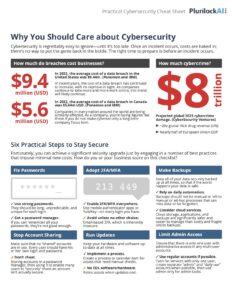In the ever-evolving landscape of cybersecurity threats, one term that has gained significant prominence is Account Takeover (ATO). Account Takeover refers to the unauthorized access and control of a user’s account by a malicious actor. This cybersecurity threat has become a major concern for individuals, businesses, and organizations alike. In this deep dive, we will explore what Account Takeover is, why it matters, and conduct an in-depth analysis of its importance in the realm of cybersecurity.
Understanding Account Takeover
Definition and Mechanisms
Account Takeover occurs when an attacker gains access to a user’s account credentials, such as usernames and passwords, and subsequently takes control of the account. This unauthorized access enables the attacker to exploit the compromised account for various malicious purposes. ATO can happen through various mechanisms, including:
- Phishing Attacks: Phishing is a common method where attackers trick users into revealing their login credentials through fraudulent emails, websites, or messages.
- Brute Force Attacks: Attackers attempt to gain access by systematically trying all possible combinations of usernames and passwords until they find the correct one.
- Credential Stuffing: In this technique, attackers use previously leaked credentials from one website to gain unauthorized access to another site where users may have reused the same login information.
- Social Engineering: Attackers manipulate individuals into divulging sensitive information by exploiting psychological and behavioral traits.
The Stages of Account Takeover
Account Takeover typically involves several stages, including:
- Initial Compromise: The attacker gains access to the victim’s credentials using one of the aforementioned methods.
- Account Access: With the compromised credentials, the attacker gains access to the user’s account.
- Control and Exploitation: Once inside the account, the attacker can manipulate, steal, or misuse sensitive information. This may include financial data, personal details, or even using the account for further malicious activities.
Why Account Takeover Matters
Financial Implications
Account Takeover can have severe financial consequences for individuals and organizations. Attackers often exploit compromised accounts to engage in fraudulent activities, such as making unauthorized transactions, transferring funds, or accessing sensitive financial information. Victims may incur financial losses, and businesses could face reputational damage and legal repercussions.
Data Breach Risks
When an account is taken over, it often involves unauthorized access to personal and sensitive data. This poses a significant risk of data breaches, leading to the exposure of confidential information. Depending on the nature of the compromised account, this could include personal details, payment information, or intellectual property.
Identity Theft
Account Takeover is a precursor to identity theft, as attackers can use the stolen credentials to impersonate the victim. This can result in a wide range of consequences, including opening fraudulent accounts, accessing medical records, or committing crimes in the victim’s name. The long-term impact on individuals can be profound, affecting their credit history, personal life, and overall well-being.
Business Disruption
For businesses, the impact of Account Takeover extends beyond financial losses. Disruption to business operations, loss of customer trust, and damage to brand reputation are significant concerns. The compromise of employee accounts can also lead to the exposure of sensitive corporate information, affecting business continuity and competitiveness.
Credential Reuse
One critical aspect of Account Takeover is the potential for credential reuse. Many individuals use the same or similar passwords across multiple accounts. Once an attacker gains access to one account, they may try using the same credentials on other platforms, amplifying the scope and impact of the breach.
In-Depth Analysis of Account Takeover
Evolution of Attack Techniques
Account Takeover techniques have evolved alongside advancements in technology and cybersecurity measures. Attackers continually adapt and innovate, making it challenging for security professionals to stay ahead. The rise of machine learning and artificial intelligence has also enabled attackers to create more sophisticated and targeted attacks.
Underground Economy
The illicit trade of stolen account credentials has given rise to a thriving underground economy. Cybercriminals buy and sell compromised accounts on dark web marketplaces, creating a lucrative ecosystem for the exchange of valuable information. This dynamic economy fuels the continuous cycle of Account Takeover attempts.
Role of Two-Factor Authentication (2FA)
While 2FA provides an additional layer of security, it is not foolproof against Account Takeover. Some attack vectors, such as phishing, may still bypass 2FA. Additionally, attackers have developed methods to intercept or circumvent 2FA, underscoring the need for a multi-faceted approach to cybersecurity.
Behavioral Biometrics and Anomaly Detection
To combat Account Takeover effectively, organizations are increasingly leveraging behavioral biometrics and anomaly detection. Analyzing user behavior patterns and identifying deviations from the norm can help detect suspicious activities, triggering alerts or automated responses. This proactive approach adds a dynamic layer to traditional security measures.
Legal and Regulatory Framework
The increasing prevalence of Account Takeover has prompted governments and regulatory bodies to enact stringent data protection laws. Organizations are now required to implement robust security measures to safeguard user information. Non-compliance can result in severe penalties, further emphasizing the importance of addressing Account Takeover risks.
User Education and Awareness
Given that many Account Takeover attempts rely on social engineering and user negligence, education and awareness initiatives play a crucial role. Users need to be informed about the risks of sharing credentials, falling victim to phishing attacks, and the importance of using strong, unique passwords for each account.
Industry Collaboration
Addressing Account Takeover requires collaborative efforts across industries. Information sharing and collaboration between cybersecurity professionals, law enforcement agencies, and businesses can help create a united front against cyber threats. The sharing of threat intelligence enables organizations to stay informed about emerging risks and vulnerabilities.
Conclusion
In conclusion, Account Takeover poses a multifaceted threat with far-reaching consequences for individuals and organizations. As cybercriminals continually refine their techniques, the importance of robust cybersecurity measures cannot be overstated. Financial losses, data breaches, identity theft, and business disruption are just a few of the challenges posed by Account Takeover. To effectively mitigate these risks, a comprehensive approach involving technological solutions, user education, and industry collaboration is imperative. As we navigate the evolving landscape of cybersecurity threats, understanding and addressing the intricacies of Account Takeover will be essential in safeguarding the digital ecosystem.













